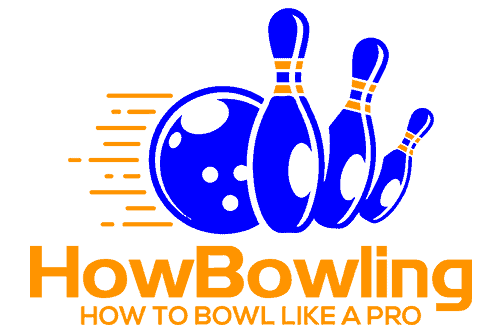Ever wondered what it takes to knock down those ten pins in a single roll? Ten-pin bowling, or target bowling, is a popular recreational sport played worldwide. It’s not just about rolling a ball down the alley; it’s about skill, strategy, and precision.
Imagine standing at the end of the lane, eyeing your target – that triangle formation of pins known as the “ten-pin alley.” With your first ball in hand, you aim and let it fly. The sound of crashing pins fills the air as you celebrate your success.
Ten-pin bowling provides more than just an exciting challenge; it offers opportunities for socializing and friendly competition. Whether you’re a seasoned pro or new to the game, every roll presents a fresh chance to prove yourself. So grab a ball, step up to the line, and dive into the world of ten-pin bowling!

History and Evolution of Ten-Pin Bowling
Ten-pin bowling, a beloved sport enjoyed by millions worldwide, has a rich history that dates back centuries. From its ancient roots to its evolution into the modern game we know today, ten-pin bowling has captivated players and spectators alike. Let’s delve into the fascinating journey of this popular pastime.
Ancient Origins and European Influence
The origins of ten-pin bowling can be traced back to ancient civilizations such as Egypt and Rome. While the exact details are uncertain, evidence suggests that games involving pins and balls were played in various forms during these times. However, in Europe, the foundations of modern ten-pin bowling began to take shape.
The game evolved from European lawn games like bocce and bowls. These outdoor activities involved rolling balls toward a target or attempting to knock down objects. As time passed, variations emerged across different regions, each with unique rules and equipment.
The Rise of Ten-Pin Bowling in America
It was in the 19th century that ten-pin bowling gained significant popularity in the United States. Immigrants from various European countries brought their love for the sport across the Atlantic, introducing it to American shores. Initially played outdoors on grassy surfaces, it eventually transitioned indoors as dedicated establishments called “bowling alleys” began to emerge.
During this period, numerous innovations took place to enhance gameplay. The introduction of wooden lanes replaced grassy surfaces, while advancements in pin design improved pinfall accuracy. As more people embraced ten-pin bowling as a recreational activity, it became integral to American culture.
Standardization through the American Bowling Congress
The American Bowling Congress (ABC) was formed in 1895 to establish uniformity in rules and regulations for competitive play. This marked a crucial turning point for ten-pin bowling as standardized rules were established nationwide.
Under ABC’s guidance, several key elements of the game were solidified. This included standardizing pin dimensions, lane specifications, and scoring systems. These rules provided a consistent framework for players to compete against one another, ensuring fairness and integrity in the sport.
The Evolution Continues
As we entered the early 1990s, ten-pin bowling continued to evolve with technological advancements and changing societal trends. Bowling alleys embraced automated scoring systems, replacing manual scorekeeping methods. Synthetic lanes became more prevalent, offering improved durability and consistency compared to traditional wooden surfaces.
Furthermore, bowling centers began incorporating modern amenities such as arcade games, laser tag arenas, and upscale dining options to attract a wider audience. These enhancements aimed to create a vibrant social atmosphere where families and friends could enjoy a fun-filled day or evening out.
Notable Achievements and Individuals in Ten-Pin Bowling
Don Carter: Revolutionizing the Sport with a Million-Dollar Prize
Don Carter, one of the most influential figures in the history of ten-pin bowling, made waves by becoming the first professional bowler to earn $1 million in prize money. His exceptional skills and dedication to the sport paved the way for future generations of professional bowlers. Carter’s achievements solidified his status as a legend and helped elevate ten-pin bowling into a more lucrative profession.
Walter Ray Williams Jr.: A Record-Breaking Career
Walter Ray Williams Jr., often hailed as one of the greatest professional bowlers, holds an awe-inspiring record of 47 Professional Bowlers Association (PBA) Tour titles. His remarkable consistency and unmatched talent have earned him numerous accolades throughout his illustrious career. Williams’ dominance on the lanes has left an indelible mark on the sport, inspiring aspiring bowlers worldwide to strive for greatness.
Earl Anthony: Dominating the Decade
During the 1970s, Earl Anthony emerged as a force to be reckoned with in ten-pin bowling. With six PBA Player of the Year awards, Anthony showcased unparalleled skill and determination throughout his career. He consistently outperformed his competitors and etched his name in history as one of the most successful bowlers ever. Anthony’s legacy continues to inspire both amateur and professional bowlers alike.
Liz Johnson: Breaking Barriers and Shattering Glass Ceilings
Liz Johnson shattered gender barriers when she became the first woman to reach a televised PBA Tour final. Her groundbreaking achievement demonstrated her exceptional talent and highlighted the growing inclusivity within ten-pin bowling. As a trailblazer for female athletes, Johnson’s success inspires women looking to compete at the highest level in this traditionally male-dominated sport.
The notable achievements and individuals mentioned above are just a glimpse into the rich tapestry of ten-pin bowling history. From professional bowlers like Don Carter and Walter Ray Williams Jr., who have rewritten the record books, to champions like Earl Anthony, who dominated the sport during their era, each individual has contributed to shaping the landscape of modern bowling.
In addition to these remarkable athletes, it is worth mentioning organizations such as the Professional Bowlers Association (PBA) and the United States Bowling Congress (USBC), which provide platforms for both professional and league bowlers to showcase their skills. These institutions play a crucial role in nurturing talent, organizing tournaments, and upholding the integrity of the sport.
Moreover, events like the USBC Queens tournament are significant in ten-pin bowling. This prestigious competition brings together top female bowlers worldwide to compete for the coveted gold medal. The USBC Queens is a testament to the growing recognition and opportunities for women in this dynamic sport.
Lastly, we cannot overlook legendary figures such as Dick Weber, whose contributions as a player and ambassador have left an indelible mark on ten-pin bowling. Weber’s skill on the lanes and his charismatic personality helped popularize the sport among audiences worldwide.
Rules and Scoring in Ten-Pin Bowling
Ten-pin bowling is a popular recreational activity that involves rolling a ball down a lane to knock down ten pins. Specific rules and scoring systems are in place to keep the game fair and exciting.
Each player gets two attempts per frame to knock down all ten pins. You have two chances to hit as many pins as possible in each frame. If you knock down all the pins on your first attempt, it’s called a strike. Strikes are highly coveted because they can significantly boost your score.
Spares occur when all the pins are knocked down within two attempts of a frame. For example, it counts as a spare if you fail to get a strike on your first roll but manage to knock down the remaining pins on your second roll. Spares also contribute to your overall score and can help improve your chances of winning.
Scoring in ten-pin bowling is based on total pinfall, with bonuses for strikes and spares. Each pin knocked down is worth one point, so if you knock down eight pins on your first roll and then knock down the remaining two on your second roll, you would score 10 points for that frame (8 + 2). However, additional points are added to enhance your score if you achieve a spare or strike.
Consecutive strikes can lead to even more significant scores due to bonus points. When you get a strike, you earn 10 points for knocking down all the pins and receive bonus points based on the number of pins knocked down with each subsequent roll until the end of that frame. This means that consecutive strikes can quickly escalate your score and potentially achieve a maximum score of 300.
Calculating scores may seem complex, but practice makes it easier. Your final score is determined by adding all the individual scores from each frame. It’s important to note that the score for a frame is finalized once all subsequent rolls have been completed, as strikes and spares in later frames can impact earlier scores.
To ensure fair play, there are specific rules to follow. Players must release the ball before crossing the foul line, which marks the boundary between the approach area and the lane. Stepping over this line results in a foul, and no points are awarded for that roll. Players must be mindful of their clock position when rolling the ball to avoid interfering with other players’ turns.
Many bowlers keep track of their average scores, calculated by dividing their total pinfall by the number of games played. This helps gauge performance and improvement over time.
How to Play Ten-Pin Bowling?
Ten-pin bowling is a popular recreational activity enjoyed by people of all ages. Whether you’re a beginner or have some experience, understanding the basics of the game can help improve your skills and overall enjoyment.
Approach and Release
One of the most important aspects is approaching the foul line and releasing the ball. As you prepare to bowl, position yourself at the start of the approach area. Take a few steps forward while maintaining your balance and momentum. Once you reach the foul line, aim at the pins and release the ball toward your target area on the lane.
Footwork Technique
Proper footwork technique is crucial for a consistent delivery in ten-pin bowling. Begin with a relaxed stance and take small steps as you move toward the foul line. Maintain a smooth rhythm throughout your approach, ensuring each step complements your arm swing motion. You can enhance your accuracy and reduce unnecessary errors by practicing good footwork techniques.
Adjusting Aim for Lane Conditions
Lane conditions play a significant role in ten-pin bowling. Factors such as oil patterns or hook potential can affect your ball’s behavior toward hitting the pins. It’s essential to adjust your aim to adapt to these conditions. If heavy oil is concentrated towards one side of the lane, consider aiming towards an area with less oil for better ball control.
Developing Arm Swing Motion
Developing a consistent arm swing motion is another key aspect of playing ten-pin bowling. Your arm should swing freely from backswing to forward release without jerky movements or excessive force applied during delivery. Practice maintaining a smooth pendulum-like motion for improved accuracy and power behind each throw.
To summarize:
- Approach the foul line, aim at the pins, and release the ball toward your target area on the lane.
- Use proper footwork technique for consistent delivery.
- Adjust your aim based on lane conditions such as oil patterns or hook potential.
- Develop a uniform arm swing motion for better accuracy.
By following these guidelines, you can enhance your ten-pin bowling skills and enjoy the game to its fullest. So, go ahead, grab that ball, and give it your best shot!
Delivery Styles and Techniques in Bowling
Bowling is a sport that requires skill, precision, and strategy. Players can choose from four main delivery styles: the stroker, cranker, tweener, and spinner. Each style offers its unique advantages and challenges.
Stroker Style: Emphasizing Accuracy and Control
The stroker style of bowling focuses on accuracy and control. Players who adopt this style aim for a smooth release with minimal spin on the ball. By using a straight-handed delivery, they can maintain consistency in their shots. Strokers often excel at hitting their mark consistently and picking up spares.
To succeed as a stroker bowler, one must pay close attention to the oil patterns on the lanes. These patterns impact how the ball reacts as it travels toward the pins. By studying these patterns carefully, strokers can adjust their approach to maximize their chances of hitting strikes.
Cranker Style: Generating Power with Speed and Rev Rate
In contrast to the smooth delivery of strokers, crackers generate high ball speed and rev rate for powerful strikes. They employ a more aggressive hooking motion by rotating their wrist during release. This technique creates additional revolutions on the ball, increasing its potential to strike with force.
Crankers thrive when facing heavy oil conditions where their strong hooks can effectively cut through the oil patterns. Their ability to create entry angles into the pocket gives them an advantage when aiming for strikes.
Tweener Style: Combining Elements for Versatility
The tweener style combines elements of both stroker and cranker techniques. Tweener bowlers have moderate ball speed with controlled rev rates that allow them to adapt to various lane conditions effectively.
This versatile approach enables tweeners to adjust their shot based on changing oil patterns or lane characteristics throughout a game or tournament. They possess enough power to knock down pins forcefully while maintaining accuracy and control.
Read more about the tweener style in this article: What is a Tweener in Bowling?
Also, check out this article: Best Bowling Ball for Tweener: Top Picks and Expert Advice.
Spinner Style: Mastering the Art of Rotation
The spinner style involves a unique technique where the ball is released with a significant amount of spin. This rotation causes the ball to skid across the lane before sharply hooking toward the pins at an angle. Spinners rely on speed, spin, and entry angles to achieve strikes consistently.
Spinners often employ a shovel-style delivery, using their wrist to impart maximum spin on the ball. Their ability to manipulate the ball’s trajectory makes them proficient at picking up spares and hitting strikes when encountering dry or medium oil conditions.
Equipment and Technology in Ten-Pin Bowling
Bowling is not just about knocking down pins; it’s a sport that requires the right equipment and technology to enhance performance and create an engaging experience for players. From the materials used in bowling balls to advanced lane oiling techniques, let’s delve into the fascinating world of equipment and technology in ten-pin bowling.
Bowling Balls: The Perfect Fit for Every Bowler
Bowling balls have come a long way from their humble beginnings. Today, they are made from various materials that impact their performance on the lanes. Reactive resin balls provide excellent hook potential, allowing bowlers to control the ball’s trajectory more precisely. On the other hand, urethane balls offer enhanced durability and a smoother roll.
Want a good bowling ball for hook? Check out this article: 5 Best Bowling Balls for Hook: Ultimate Guide for 2023.
For optimal grip and control, finger holes are drilled into each ball. These holes are customized to fit the bowler’s hand size and shape, providing a comfortable grip throughout their game. With this personalized touch, bowlers can achieve better accuracy when releasing the ball, resulting in improved scores.
Advanced Lane Oiling Techniques: Changing Ball Motion
The condition of the lane surface plays a crucial role in how bowling balls behave during gameplay. Advanced lane oiling techniques have been developed to alter ball motion on the lanes. Mechanical pinsetters work alongside automatic machines that apply oil patterns to specific lane areas.
Different oil patterns affect how much friction occurs between the ball and the lane surface. For example:
- A “house shot” pattern provides more friction towards the center of the lane, making it easier for beginners to hit their target.
- A “sport shot” pattern spreads oil evenly across the entire lane, requiring skilled bowlers to make precise adjustments.
By strategically applying these patterns using state-of-the-art lane oiling machines, bowling centers can create challenging conditions that test bowlers’ skills while adding an element of excitement to every game.
Real-Time Statistics: Keeping Score Digitally
Gone are the days of manual scorekeeping with pen and paper. Today, computerized scoring systems have revolutionized tracking scores in ten-pin bowling. These systems provide real-time statistics during gameplay, allowing bowlers to keep track of their performance effortlessly.
Bowlers can see their current score, the number of strikes and spares, and even average pinfall per frame with just a glance at the overhead screens or personal monitors. This instant feedback adds convenience and fuels friendly competition among players.
The Fascinating World of Ten-Pin Bowling
Ten-pin bowling is a thrilling and popular sport that has captivated people worldwide. From casual bowlers to professional athletes, this game offers endless excitement and opportunities for competition and camaraderie. Let’s delve into the diverse aspects of this captivating sport.
International Tournaments and Leagues
One of the most remarkable features of ten-pin bowling is its ability to host prestigious international tournaments. Events like the PBA Tour, USBC Open Championships, and World Bowling Tour Finals attract top bowlers from across the globe. These tournaments showcase extraordinary talent and fierce competition and provide a platform for bowlers to demonstrate their skills on a global stage.
Furthermore, ten-pin bowling offers various leagues catering to different skill levels, age groups, and formats. Whether you’re an amateur or an expert seeking a challenge, a league exists for you. Mixed doubles competitions add an exciting twist by allowing male-female partnerships to team up, fostering cooperation and healthy competition among players.
Professional Opportunities
Beyond recreational play lies a realm where talented bowlers can turn their passion into lucrative careers. Professional bowlers can earn substantial prize money through sponsorships and endorsements. The allure of competing at high-stakes events alongside renowned bowlers drives many enthusiasts to pursue excellence in their game.
Here is a must-read article: How to Become a Professional Bowler.
Inclusivity through Adaptive Programs
Ten-pin bowling goes beyond its competitive nature by embracing inclusivity through adaptive programs designed for individuals with disabilities. These initiatives allow everyone to experience the joy of rolling strikes and spares regardless of physical limitations. Adaptive equipment such as ramps or ball stabilizers ensures everyone can participate fully in this beloved sport.
The Components: Pins, Balls, Lanes, and Alleys
To fully grasp the essence of ten-pin bowling, it’s essential to understand its components. Each game revolves around knocking down ten pins with a bowling ball on carefully maintained lanes. The pins, typically made of hardwood and standing 15 inches tall, are arranged in a triangular formation at the end of the lane. Bowling balls come in various weights and designs to suit different playing styles and preferences.
Lanes serve as the battlegrounds for bowlers, providing a smooth surface for their balls to glide upon. These lanes are meticulously conditioned with oil patterns that influence ball movement, adding an extra layer of strategy to the game. Bowling alleys house multiple avenues where bowlers can compete simultaneously, creating an electrifying atmosphere filled with cheers and friendly banter.
Variant of World Bowling Scoring System
Introduced in 2014, the World Bowling Scoring System variant revolutionized ten-pin bowling by offering a simplified scoring method that increased accessibility for players of all skill levels. This new approach eliminated complex calculations and instead assigned one point for each pin knocked down. Let’s explore why this scoring system quickly gained popularity and became the standard in many countries worldwide.
The primary objective behind introducing this variant was to encourage faster-paced games with reduced downtime between frames. Players could focus more on their performance by eliminating the need for intricate calculations, leading to a more engaging and enjoyable experience. This change proved particularly beneficial for beginners who found traditional scoring systems daunting and time-consuming.
One of the key advantages of this simplified scoring system is its ease of use. Unlike traditional methods that require players to keep track of strikes, spares, and bonus points, this variant allows individuals to concentrate solely on knocking down pins without worrying about complex arithmetic. As a result, even those unfamiliar with bowling can quickly grasp the rules and start playing without feeling overwhelmed.
The adoption of this variant as the standard scoring system by numerous countries around the globe further reinforces its effectiveness in enhancing accessibility. Its widespread acceptance has led to greater consistency across different bowling alleys, making it easier for enthusiasts to transition seamlessly between venues without learning other scoring systems each time.
This simplified approach has also positively impacted competitive play. With fewer interruptions caused by score calculations or disputes over-complicated rules, tournaments can proceed smoothly and efficiently. This saves valuable time and adds an element of excitement as players can maintain their momentum throughout the game.
While some purists may argue that this variant diminishes the strategic aspect of traditional scoring systems, its benefits cannot be overlooked. The aim is to attract new participants and make bowling more accessible to a wider audience rather than catering exclusively to seasoned professionals.
Conclusion: The Fascinating World of Ten-Pin Bowling
Ten-pin bowling is a thrilling sport that has captivated people for decades. From its rich history and evolution to the notable achievements of individuals, there is much to appreciate about this game. Understanding the rules and scoring system allows players to fully immerse themselves in the excitement while exploring different delivery styles and techniques, adding depth to their gameplay.
The equipment and technology used in ten-pin bowling have also evolved, enhancing the overall experience. Bowlers can optimize their performance and strive for greater success by choosing the right ball or utilizing advanced tracking systems.
The fascinating world of ten-pin bowling extends beyond just playing the game. It brings together a diverse community of enthusiasts passionate about this unique sport. Tournaments and leagues provide opportunities for friendly competition and camaraderie among players from all walks of life.
If you’re new to ten-pin bowling, now is the perfect time to try it! Grab your friends or family, head to a local alley, and experience the thrill firsthand. Whether aiming for strikes or enjoying quality time together, ten-pin bowling offers endless fun and entertainment.
So why wait? Step into the world of ten-pin bowling today and discover what makes this sport so special. Embrace its history, learn from its champions, master your technique, and create lasting memories with loved ones on those exhilarating nights at the alley.
FAQs
Q: Can anyone play ten-pin bowling?
A: Absolutely! Ten-pin bowling is suitable for people of all ages and skill levels. Whether you’re a beginner or an experienced player, there’s always room on the lanes for everyone.
Q: Do I need my equipment to play?
A: Most bowling alleys provide rental shoes and balls, so you don’t need to bring your equipment. However, investing in your bowling ball can enhance your performance and comfort if you fall in love with the sport.
Q: How long does a game of ten-pin bowling usually last?
A: A ten-pin bowling game takes 10-15 minutes per player. So if you’re playing with a group of four people, it would take about an hour for everyone to complete a full game.
Read more in this in-depth article: How Long is a Game of Bowling?
Q: Are there any specific techniques to improve my bowling skills?
A: Yes! Practicing proper form, focusing on your aim and delivery, and experimenting with different ball speeds and angles can improve your bowling skills. Taking lessons from experienced bowlers or coaches can also provide valuable insights and guidance.
Q: Can I participate in competitive leagues or tournaments?
A: Absolutely! Many bowling alleys offer leagues and tournaments for players who want to take their skills to the next level. It’s a great way to challenge yourself, meet other bowlers, and win prizes based on your performance.
Read more on bowling leagues in this article: Bowling Leagues: What You Need to Know.
Remember, the best way to truly appreciate ten-pin bowling is by getting out there and giving it a go. Enjoy the thrill of knocking down those pins, embrace the friendly competition, and create lasting memories that will keep you coming back for more!




